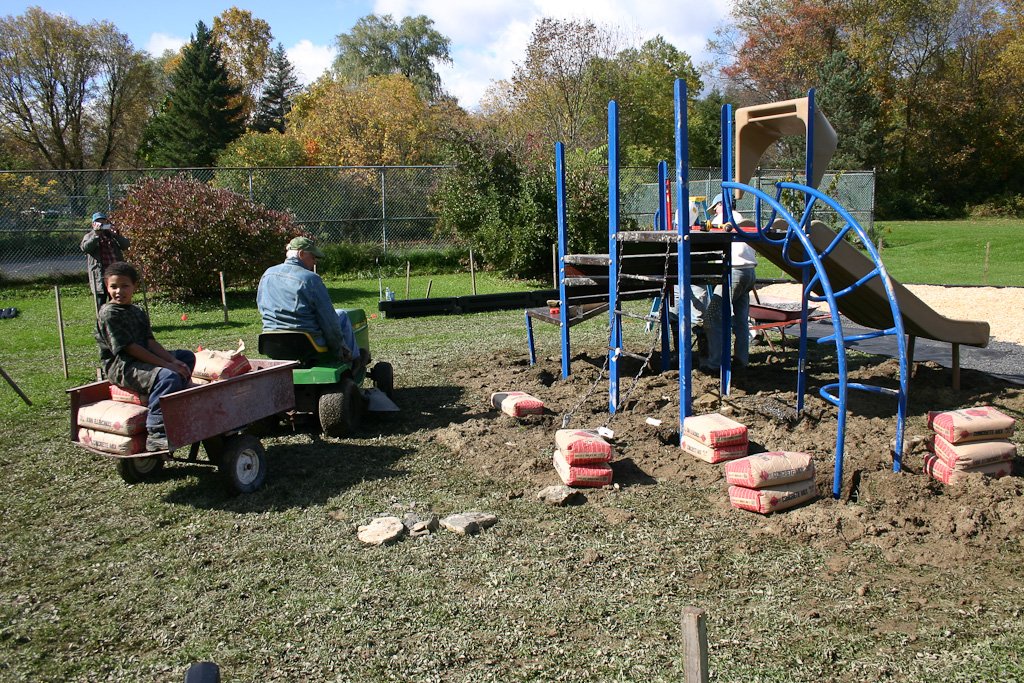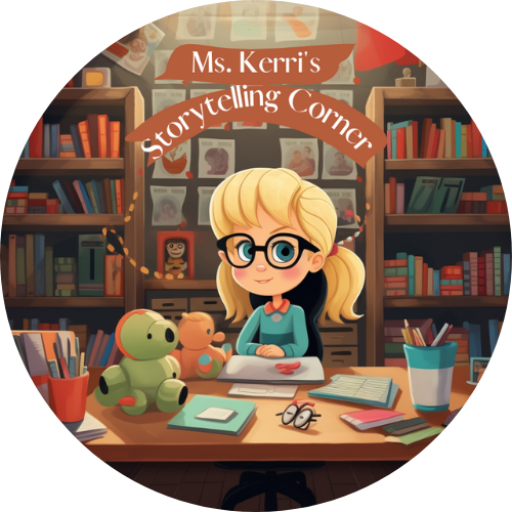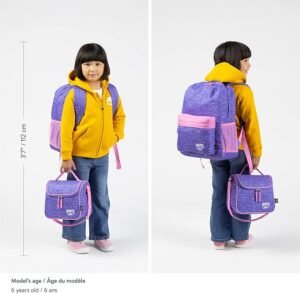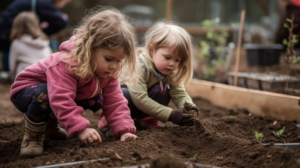
Engineering and construction activities for preschoolers provide a fun and educational way to introduce young children to the world of engineering. These activities help children develop critical thinking, problem-solving, and creativity while engaging in hands-on exploration and construction. Through these experiences, preschoolers can gain a deeper understanding of engineering concepts and principles, laying the foundation for future learning and innovation.
Key Takeaways
- Introduce engineering concepts through hands-on activities
- Explore basic engineering principles through play
- Encourage creative use of building materials
- Promote collaborative design and planning
- Develop problem-solving skills through construction projects
Exploring Engineering Concepts
Introduction to Engineering
Engineering is not just about complex calculations and building skyscrapers; it’s a way of thinking and solving problems that can start from a very young age. Preschoolers are naturally curious, and introducing them to the basics of engineering can harness that curiosity into constructive learning experiences.
Engineering concepts can be simplified for young learners, making it an exciting and accessible field.
Understanding the essentials of engineering involves recognizing that it’s all about creating solutions to problems. This can be as simple as figuring out how to prevent a block tower from falling over or designing a waterway for toy boats. Here are a few key concepts to introduce:
- Problem-solving
- Design thinking
- Creativity and innovation
By starting with simple projects and activities, we can lay the foundation for more complex engineering challenges as children grow. It’s important to encourage exploration and experimentation, as these are the cornerstones of engineering.
Basic Engineering Principles
Understanding basic engineering principles is crucial for young minds as they embark on building and construction activities. These principles lay the foundation for creating structures that are not only aesthetically pleasing but also functional and safe. The core of engineering is problem-solving, which involves identifying issues, brainstorming possible solutions, and selecting the most effective method to implement.
By introducing preschoolers to simple engineering concepts, we can foster their natural curiosity and encourage them to think critically about the world around them.
Here are a few basic principles that can be easily understood by young learners:
- Stability ensures that structures can withstand various forces without collapsing.
- Balance is key to preventing structures from tipping over.
- The concept of leverage helps in understanding how forces can be used to move heavy objects more easily.
- Simple machines, like levers and pulleys, introduce the idea of mechanical advantage.
These principles can be explored through hands-on activities that challenge children to use their creativity and problem-solving skills. Encouraging them to build with different materials and designs helps them grasp these concepts in a fun and engaging way.

Hands-on Engineering Activities
After exploring the basic principles of engineering, it’s time to put theory into practice with hands-on engineering activities. These activities not only reinforce the concepts learned but also stimulate creativity and problem-solving skills in preschoolers.
Engaging in hands-on activities is crucial for the development of fine motor skills and understanding the practical applications of engineering principles. From building simple machines to creating structures that can withstand various forces, the possibilities are endless.
- Experiment with simple machines (levers, pulleys, wheels, and axles)
- Construct buildings using blocks or recycled materials
- Design and test bridges made from straws or popsicle sticks
- Create simple circuits using batteries and light bulbs
Remember, the goal is to make learning fun and accessible. Encourage exploration and don’t be afraid to let the kids lead the activity.
Building and Construction Materials

Understanding Different Materials
When introducing preschoolers to building and construction activities, it’s crucial to start with an understanding of the different materials available. Materials can significantly influence the complexity and safety of a project. For example, materials like clay, paper, and fabric are malleable and safe for young children, while wood and plastic may require adult supervision.
It’s essential to choose materials that are age-appropriate and safe for preschoolers to handle.
Here’s a brief overview of common materials used in preschool construction activities:
- Clay: Soft and moldable, ideal for shaping.
- Paper: Lightweight and easy to cut, suitable for making simple structures.
- Fabric: Versatile for decoration and sensory activities.
- Wood: Durable, but may need adult supervision for cutting or assembly.
- Plastic: Includes items like LEGOS and Duplos, which are great for building sturdy structures.
Safety Precautions
After ensuring a solid understanding of different materials and their properties, it’s crucial to focus on safety precautions. Safety is paramount when engaging preschoolers in building and construction activities. It’s not just about avoiding injuries; it’s also about fostering a safe and encouraging environment where young minds feel confident to explore and create.
Always supervise children during construction activities to prevent accidents and ensure safe use of tools and materials.
Here are some essential safety tips:
- Use non-toxic, child-safe materials and tools.
- Keep sharp and heavy objects out of reach.
- Teach children the importance of wearing protective gear, like gloves and safety glasses, when necessary.
- Encourage the clean-up process after each activity to maintain a tidy and hazard-free space.
Creative Use of Materials
Preschoolers have an innate ability to see the potential in everyday items, turning them into imaginative building materials. Encouraging this creativity not only fosters their engineering skills but also teaches them about recycling and sustainability. The key is to provide a variety of materials and let their imaginations run wild.
By incorporating items such as cardboard tubes, fabric scraps, and plastic containers, children learn to think outside the box. They discover that almost anything can be a building material if approached with creativity.
Here’s a list of common household items that can be transformed into construction materials:
- Cardboard boxes
- Toilet paper rolls
- Plastic bottles
- Egg cartons
- Fabric scraps
- Wooden spoons
- Old CDs
Safety is paramount when selecting materials for preschoolers to use. Ensure all items are clean, free from sharp edges, and suitable for their age. This approach not only sparks joy and innovation but also instills a sense of responsibility towards the environment.
Designing and Planning Projects

Idea Generation
Generating ideas for construction and building activities is a crucial step in engaging preschoolers with engineering concepts. Encouraging creativity and imagination in young learners can lead to innovative designs and solutions. It’s important to foster an environment where every idea is valued and considered, regardless of its feasibility.
To kickstart the idea generation process, start with a simple question: What do you want to build today?
This question can open up a world of possibilities and encourage children to think broadly about what they can create. Using storybooks, everyday objects, or themes from nature can also inspire ideas. Here’s a list of prompts to help guide the brainstorming session:
- Imagine building a house for your favorite toy.
- What kind of vehicle can you create to travel to the moon?
- Design a bridge that animals can use to cross a river safely.
- Think of a way to construct a tower that reaches the clouds.
These prompts are designed to spark imagination and encourage children to think outside the box. By making the idea generation process fun and interactive, preschoolers can develop a deeper interest in engineering and construction.
Project Planning
After the initial idea generation phase, it’s time to move into the more structured phase of project planning. This is where preschoolers can start to understand the importance of organizing their thoughts and materials before diving into construction. Creating a simple plan can significantly enhance the building process.
- Identify the project goal
- List the materials needed
- Determine the steps to completion
Remember, the planning phase is not just about the what and the how, but also about fostering a sense of ownership and responsibility towards the project.
By breaking down the project into manageable steps, children learn the value of planning and how it can lead to a more successful and enjoyable building experience.
Collaborative Design
After the initial stages of idea generation and project planning, the collaborative design phase brings a unique opportunity for preschoolers to learn the value of teamwork and shared creativity. At this stage, children are encouraged to work together to refine their ideas and bring their collective vision to life. This process not only enhances their social skills but also fosters a deeper understanding of the project at hand.
Collaboration in design encourages children to express their ideas freely and learn from the perspectives of their peers.
To ensure a successful collaborative design process, consider the following steps:
- Encourage open communication among the children.
- Assign roles based on each child’s strengths and interests.
- Facilitate regular check-ins to monitor progress and address any challenges.
- Celebrate each milestone achieved as a team, reinforcing the importance of collective effort.
Constructing Simple Structures

Building with Blocks
Building with blocks is a fundamental activity that introduces preschoolers to the basics of construction and engineering. It’s an engaging way to develop spatial awareness, problem-solving skills, and creativity. Blocks come in various shapes, sizes, and materials, offering endless possibilities for young builders.
When starting with block building, it’s important to encourage exploration. Preschoolers should feel free to experiment with different configurations and structures. This hands-on experience is crucial for understanding basic engineering concepts like balance, weight distribution, and structural integrity.
Materials commonly used in block building include wooden blocks, plastic interlocking blocks, and foam blocks. Each type has its unique benefits and challenges:
- Wooden blocks: Durable and offer a natural texture.
- Plastic interlocking blocks: Easy to connect and disassemble.
- Foam blocks: Safe and lightweight, ideal for younger children.
Remember, the goal is not to build the perfect structure, but to explore and learn through the process of building and rebuilding.
Encouraging collaboration among preschoolers can enhance the learning experience. Working together on a block-building project fosters teamwork, communication, and the sharing of ideas. It’s a valuable opportunity for children to learn from each other and to see how different approaches can lead to successful outcomes.
Creating Stable Foundations
After laying down stable foundations, the next step is to focus on assembling and joining different elements to create a cohesive structure. This phase is crucial as it determines the overall strength and durability of the project.
Italics are often used to emphasize the importance of precision in this stage. Without meticulous attention to detail, even the most well-planned structures can fail.
Remember, the goal is not just to build, but to build something that lasts.
Here are a few techniques commonly used in preschool construction projects:
- Interlocking: Blocks or components that fit together securely.
- Gluing: Using child-safe adhesives to bond materials.
- Taping: Applying tape as a temporary or permanent joining method.
- Tying: Using strings or yarns to connect parts.

Assembling and Joining
Once preschoolers have selected their materials and designed their projects, the next exciting step is assembling and joining the pieces together. This phase is crucial as it transforms ideas into tangible structures. Children learn to solve problems and adapt their designs during this process, which is a valuable part of their developmental journey.
Remember, the goal is not perfection but exploration and learning.
Here are a few tips to guide children in this phase:
- Encourage them to experiment with different joining methods, such as glue, tape, or interlocking pieces.
- Show them how to carefully align pieces before joining them to ensure stability.
- Remind them that it’s okay to ask for help if they’re struggling to join pieces together.
This hands-on experience not only enhances their motor skills but also boosts their confidence as they see their projects come to life.
Conclusion
In conclusion, engaging preschoolers in building and construction activities is not only fun, but also promotes their cognitive, physical, and social development. These activities provide valuable learning experiences and help children develop important skills that will benefit them throughout their lives. So, grab some building blocks and get ready to have a blast with your little engineers!
Frequently Asked Questions
What age group is suitable for these activities?
These activities are designed for preschoolers, typically ages 3 to 5, but can be adapted for older or younger children.
What safety measures should be taken during these activities?
Adult supervision is essential to ensure the safety of the children. It’s important to use child-safe materials and tools and to teach children about safety practices.
How can I encourage creativity and problem-solving in these activities?
Allow children to explore and experiment with the materials freely. Encourage them to come up with their own ideas and solutions, and praise their creativity and problem-solving skills.
What are the benefits of engaging in engineering and construction activities at a young age?
These activities help develop critical thinking, spatial awareness, fine motor skills, and creativity. They also foster an early interest in STEM (science, technology, engineering, and math) fields.
How can I involve parents or caregivers in these activities?
Provide parents with information about the activities and encourage them to participate in the building and construction projects with their children. This can be a great bonding experience and a way to reinforce learning at home.
What if a child loses interest or becomes frustrated during an activity?
It’s important to be patient and supportive. Offer encouragement and assistance without taking over the task. If a child loses interest, it’s okay to move on to a different activity or revisit the project later.


Ms. Kerri’s Corner provides a exciting virtual space for preschool learning. Through a variety of engaging activities, she exposes young minds to early math, literacy, science and social-emotional skills in a developmentally appropriate way. Centers for blocks, art, books and music allow children to explore hands-on learning at their own pace. Guided lessons subtly introduce number sense, letter sounds and narrative thinking. Careful observation gives insight into each child’s progress across domains. Viewers are also invited to participate, reinforcing that their ideas are valued. By making learning fun yet purposeful, Ms. Kerri lays the groundwork for future academic success while fostering creativity and imagination. Her program offers preschoolers valuable screen-based learning experiences.



